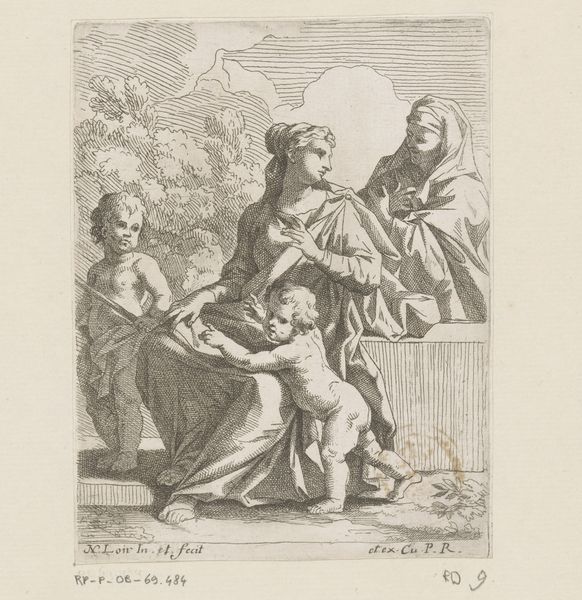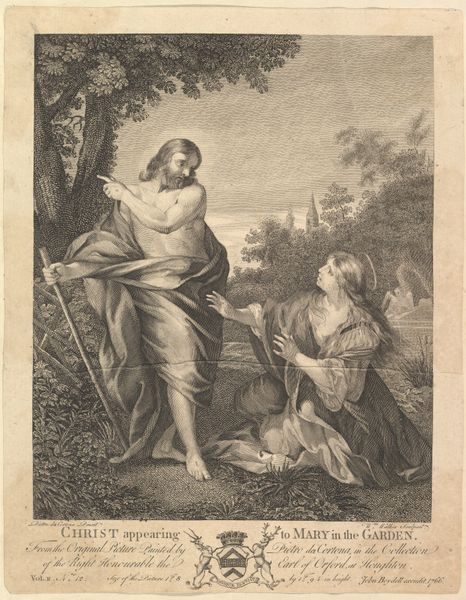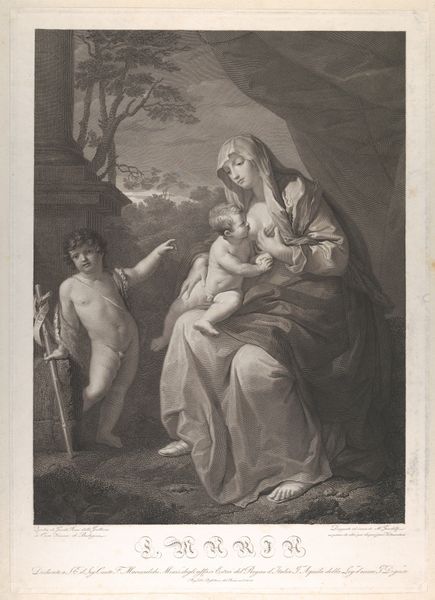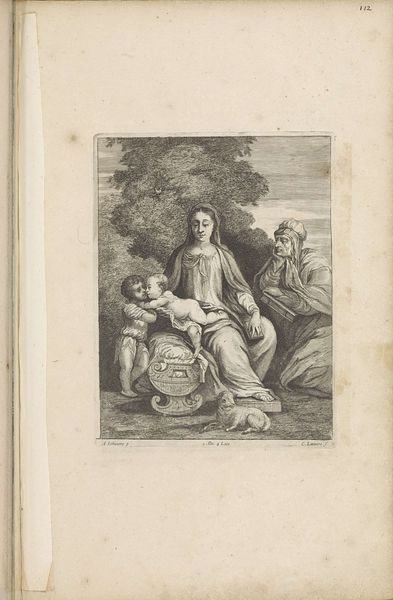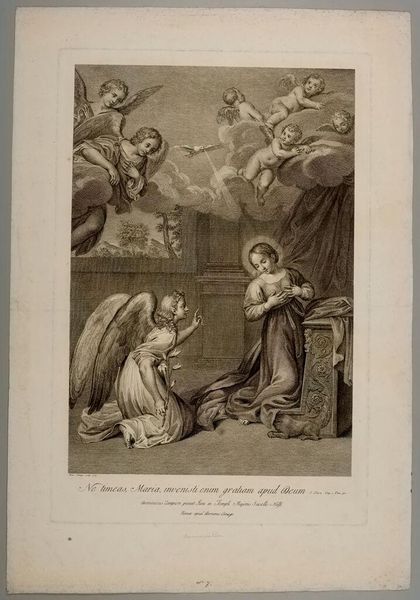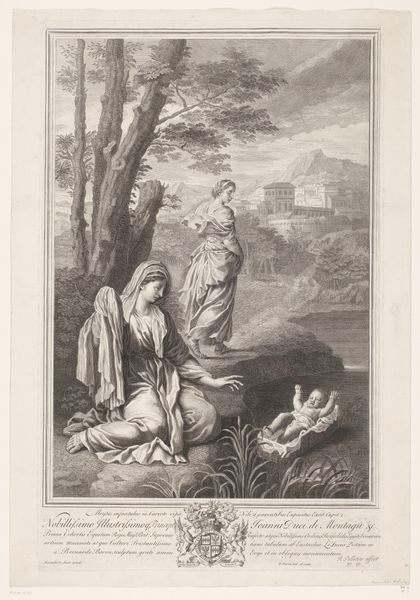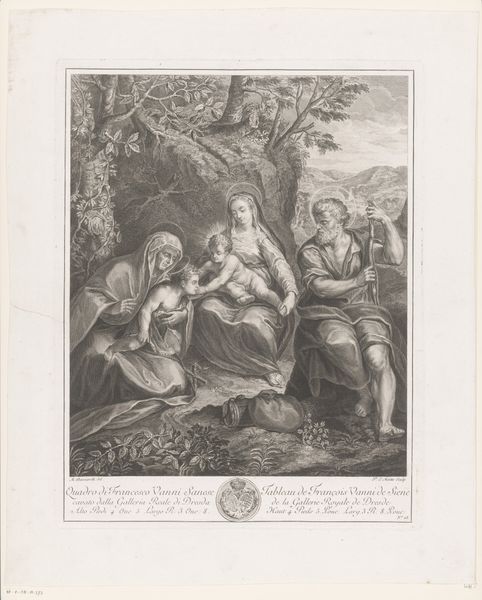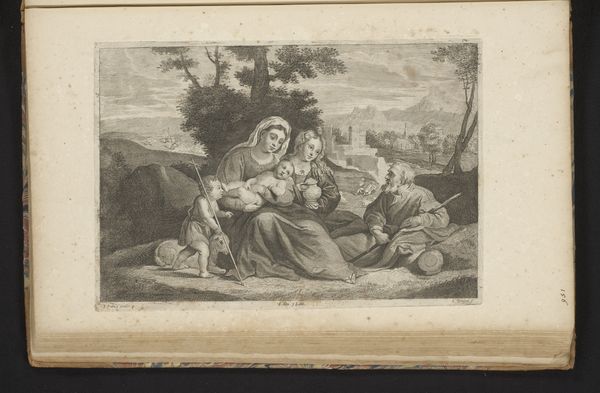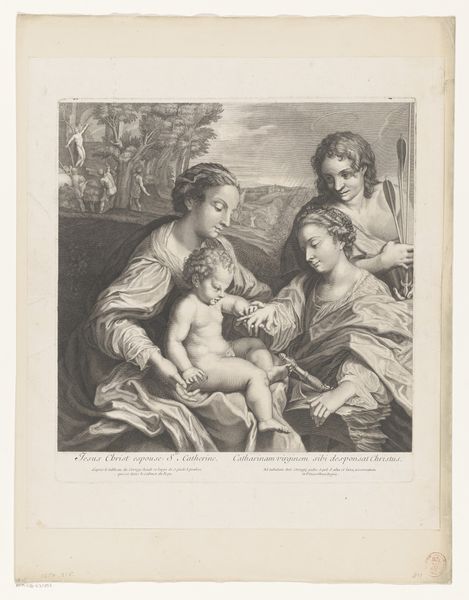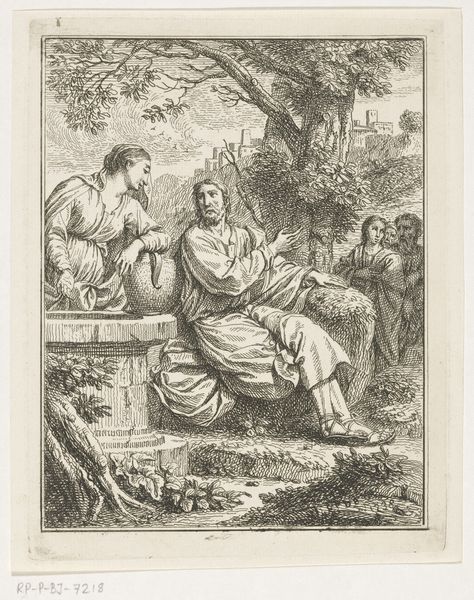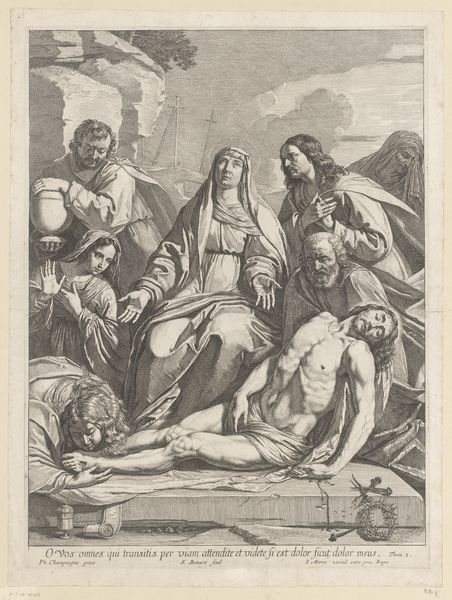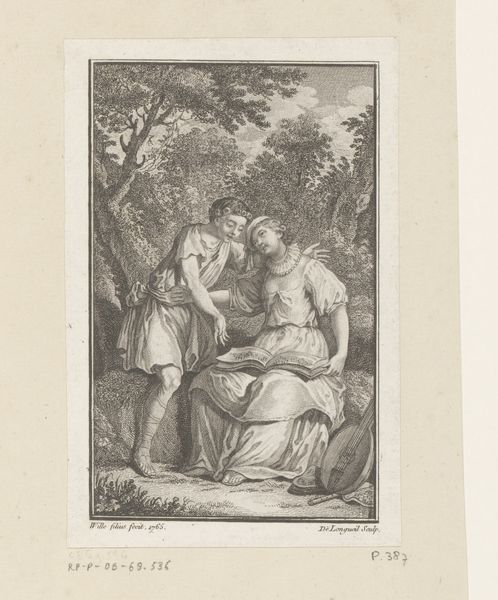
engraving
#
baroque
#
figuration
#
history-painting
#
engraving
Dimensions: height 386 mm, width 287 mm
Copyright: Rijks Museum: Open Domain
Curator: This is Carlo Gregori’s engraving, “Christ Appears to Mary Magdalene,” created between 1756 and 1759. It's currently held in the Rijksmuseum's collection. What strikes you first? Editor: It has a mournful tone. Mary Magdalene’s pose and averted gaze are quite compelling in conveying grief. I notice three cherubic figures almost dissolving into the background on the right. Curator: Absolutely. The composition leads our eye deliberately from the central figures of Christ and Mary Magdalene through the strategic use of light and shadow— a core Baroque aesthetic. What I find especially noteworthy is Gregori's handling of line to suggest Albani’s original painting with impressive fidelity. Editor: And consider the source material. This subject has significant layers. Mary Magdalene's story, her alleged past, her repentance— it’s all charged with implications about gender, sexuality, and the role of women in religious narratives. This depiction offers a lens through which the viewer is invited to reconsider patriarchal expectations. Curator: Interesting point, I hadn’t considered gender aspects overtly, though the contrast between Christ’s active stance and Mary’s contemplative posture undeniably presents a dynamic of power. However, stylistically speaking, it's worth highlighting the engraving's precise detailing and balance, achieved within a primarily monochromatic palette. Note the skillful contrast of textures, which brings volume and depth. Editor: Of course, one could interpret this image of Christ addressing Mary Magdalene as a crucial turning point. It’s a story about recognition and revelation – and a validation of her as witness. Mary’s gaze might suggest the stirrings of change or awakening that is needed even now in how marginalized voices may be heard. Curator: A valid point about her role. Overall, Gregori's engraving provides a complex interaction of light, composition, and religious narrative. Editor: Agreed. Ultimately, this is a visually and conceptually rich print that compels reflection on both aesthetic mastery and religious-cultural legacies.
Comments
No comments
Be the first to comment and join the conversation on the ultimate creative platform.
